Food scientists from the Food Commodities and Ingredients Group answer questions from SCI members and the general public on subjects ranging from cooking and nutrition, to vegetarianism and food safety.
'Ask A Food Scientist 2010' followed Food Safety Week from 7 – 13 June 2010. Thanks to all those who took part.
Gritty spinach
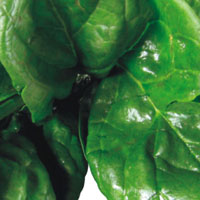
Provided the spinach has been washed to remove grit from the soil in which the plant was grown, the gritty texture of spinach may come from an excess of oxalic acid present naturally in the spinach leaves (around 6-9% on a dry weight basis). The texture is likely to be caused by insoluble oxalate calcium crystals (hence the hardened texture) which will therefore not be dissolved by water, even during cooking.
Varietal oxalic acid content differences have not been widely documented; however the literature hints at little variation between spinach varieties. It is however worth noting that oxalic acid contents are affected by the stage of plant growth and development, and potentially by growth conditions.
Superfoods
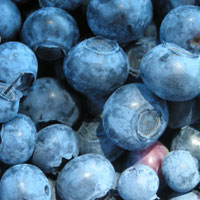
Scientific consensus in the diet, health and nutrition fields tends to debunk the term 'superfood', and as one might imagine there is no scientific definition or quantitative delineation of what makes one food 'super' rather than another. In fact, the term is usually coined by the producers of foods that contain ingredients (or extracts derived from ingredients) linked in some way to health benefits. As there is no definition of the term, these may be both 'traditional' nutritional benefits, and proposed functionality beyond this (antioxidant activity for example).
While provision of nutrients in the diet is highly important to good health, many foods that are not nominated 'super' provide excellent macro- and micro-nutrient levels. A balanced diet will therefore generally provide the levels of all these essential nutrients, without the need to habitually go 'super' at the dining table.
Blueberries contain high levels of dietary fibre, for example, but how significant are they in the diet compared to apples or fibre-containing cereals?
Most people associate 'superfoods' with the second classification of benefits; those that go 'beyond' the nutrients, providing antioxidation or maintaining a healthy heart. EU legislature prevents the marketing of 'superfood' products without a specific health claim and supporting scientific data for the proposed benefits. Many of these claims are supported by data from test-tube or animal model studies that simplify reality and gloss over issues such as bioavailability, to the point that they bear little or no resemblance to the situation in the human body.
The pivotal super-claim of antioxidant activity in 'superfoods' is itself under huge scrutiny, with the scientific community finding many flaws in the original theories of direct antioxidation.
In summary therefore, yes superfoods can provide a health benefit in terms of nutrient provision, but this is not always measurably better than an 'ordinary food' or significant enough in the context of the total diet. The science of many other functional claims is dangerously undercooked, and is often cherry-picked for commercial gain.
Pickled vegetables

The problem is that once the sauce is fresh, it tastes great. But after a short period of time the emulsification's flavours begin to change, and it becomes more sour and darker in colour. Is there any type of chemical agent that would help prevent the flavours and colours from changing?
The difficulties you are facing are most likely because you have a 'live' system. The enzymes within the ingredients are still active. You can slow down this process by making the product more acid, but there are obviously limits of taste, and the enzymes will still not be completely knocked out. The most effective way is to use heat to inactivate the enzymes. The flavours may change as a result of the heating, but you can try to compensate by modifying the recipe, increasing the dose of some items that have lower flavour, or using certain natural taste-enhancing ingredients.
Mouldy cheese
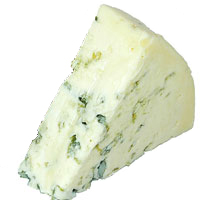
In the case of mould ripened cheeses such as Brie, Stilton, Camembert, Gorgonzola etc, the presence of the mould is deliberate. It has either been inoculated into the milk together with the starter culture as is the case of modern Stilton production, or is present in the environment where the cheese is matured, as is the case with many artisan-produced cheeses. Some cheeses may be pierced with steel needles during maturation to allow the entry of oxygen and encourage the formation of blue veins.
However in all of these cases a known stable microbiological culture is introduced, for example Penicillium roqueforti in the case of Stilton and Roquefort, and even with the more artisan producers the maturation takes place in carefully controlled conditions. The outcome of this is that the mould forms a dominant and stable culture of known composition which is safe to eat. It may even be the case that the very presence of this dominant mould can inhibit the growth of other less desirable or even harmful varieties.
Contrast this with a piece of cheese that is forgotten and has gone mouldy at the back of the fridge. Here we have adventitious contamination by unknown mould species. What's more, the very presence of mould in these circumstances would indicate a deviation from the ideal shelf life or storage conditions, so there is a risk that other harmful microbial contaminants may be present, in the worst case something like Listeria or Staphylococcus. In most cases, I would have to accept, the presence of harmful microbes is not so likely, so we have to consider the balance of risks. My advice would be, if you really are desperate to eat the last of the cheese from the back of the fridge, only do it with hard cheeses (soft cheeses are higher risk as they are higher moisture and less acidic) and cut off at least an inch away from the mould. This is because metabolites from the mould can diffuse quite a way into the cheese and it is best to avoid them.
Baking the perfect loaf
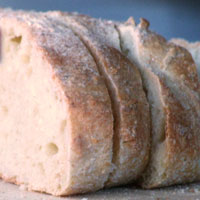
Such a big question! Firstly what would one consider to be the perfect loaf ? Bread and the values surrounding it are so deeply engrained into our culture that one could devote a whole book just to the debate surrounding that question. There is not really a simple scientific answer as it very subjective and depends on personal preference as well as social and cultural conditioning.
To give something of an answer I would break the question into parts: the structure/texture of the bread and the flavour. Although you do not say, I would assume you intend to use a bread machine, I mention this as it is important to understand that the finished bread result will depend on a combination of the recipe and the process. Bread machines are very convenient and do a very good job but you could go to town and make bread by hand which, I am told, will give you spiritual value by virtue of the experience itself.
The structure of the bread is largely determined by the protein (gluten) content of the flour, and during kneading of the dough this protein develops a fine network. When the dough 'proofs' the gas released from the fermentation of the yeast is held in place in bubbles, stabilised within the protein network. In this way it acts as a sort of scaffolding holding the structure stable, until it is set by the gelatinisation of the starch from the flour during baking.
Because of a limit to the amount of energy that bread machines can put into dough and the cycle time over which they operate, it is necessary to use a flour that is relatively high in protein (strong) to get a sufficiently developed protein network. This is why you find 'strong white' and 'extra strong white' flour. Millers sometimes add some extra gluten to the flour or use a proportion of Canadian/North American wheat (which is stronger than in the UK) to get the desired result.
Another strategy is to use 'bread improvers' which make the proteins from UK wheat more extendable and improve the gas-retaining properties of the dough. This is achieved using such things as ascorbic acid and emulsifiers (sometimes seen on the small print on the packet).
With wholemeal flour the bran inhibits the development of the protein structure, so it needs a bit of extra help by adding gluten or strong white flour.
The flavour in white bread comes largely from the fermentation of the yeast and the development of the crust, and this is where other additions like malted grains, molasses, flours from other cereals like rye and spelt, even cider vinegar can make a big difference, or simply baking in a higher humidity oven which gives more crust.
To get more flavour you may choose to use a pre-prepared yeast starter culture or a sourdough. These are more artisanal methods but can still be used with a bread machine. Some flours may contain alpha amylase enzyme, which helps the action of the yeast by releasing sugars from the starch in the dough and also gives more development of crust.
In summary, there is a world of choice out there, which has got to be a good thing. My advice would be to try a few things out and select what is best for you - at home we use a branded wholegrain mix from the supermarket – it works every time!
Ketchup in the fridge

The debate centers on the night storage. Is it helpful to put the bottles in the refrigerator overnight or is the hot-cold-hot cycle worse for them than just staying hot? Is there a 'safest' system for this type of restaurant? Thank you!
Putting in the refrigerator is most likely not a good idea - for two reasons. Firstly, you will get condensation forming inside the bottle, which will create a zone which is attractive to microbes to grow in. Ketchup is an acid product, with a reduced water activity, which restricts (but does not totally prevent) microbial growth, so these zones of condensed water will be welcomed by any microbes present.
Secondly, the cold shock may also cause microbes to come back to growth.
Lastly, we cannot let the marrying pass without comment. As you say, it is definitely not good or safe practice, but saying you rinse them after a couple of times is not an effective system if you have no way of identifying which bottles have been rinsed and when. We strongly encourage you to stop this practice.
Aflatoxins and nuts
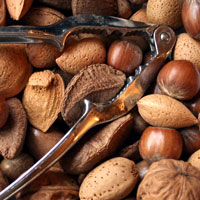
You are right to be concerned about the presence of alfatoxins in nuts. Aflatoxins are among the most toxic chemicals known, being both genotoxic (capable of causing damage to DNA) and carcinogenic and can reach very high levels in individual nuts. For this reason the levels permitted to be present in nuts are regulated in Europe. The levels permitted in peanuts for direct human consumption are 4 ug/kg but the levels in almonds, pistachios, hazelnuts and brazil nuts for direct consumption were increased earlier this year from 4 to 10 ug/kg after international negotiations.
A proportion of all the nuts entering the EU are required to be tested at the point of entry but resources do not permit all nuts to be tested. In the UK the local authority trading standards officers also have a responsibility to test samples of imported nuts where they think there may be a problem.
Sometimes, but not always, the presence of aflatoxins are associated with damaged, shrivelled or visibly mouldy nuts. Do not eat these or any that smell or taste mouldy. If you are still concerned or if you eat a large amount of nuts in your diet, you should speak to your retailer to establish whether they carry out their own checks on each individual consignment they receive.
About beans..
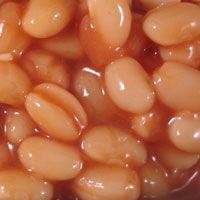
The so-called 'flatulence factor' is a serious cause of discomfort, as well as obvious embarrassment. It seems to be the presence of oligosaccharides in the food, whether beans, or eggs, or Jerusalem artichokes and there are many others. Now, it is not so much the presence of these oligosaccharides as our inability to digest them.
Some beans seem to be worse than others, but then there are also differences between people on how they react to the foods. So, there is no easy answer yet as to how to resolve the conundrum of eating more fibre and vegetables generally, and the downside of flatulence. Some level of processing of the foods (fermenting for example) can help, but that depends on the food and the person eating it. Perhaps a long term solution would be to modify the foods to match our capabilities to digest them by reducing the levels of the particular oligosaccharides - whether through genetic modification or through traditional plant breeding.
Becoming a vegetarian
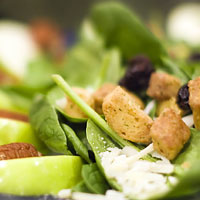
You need to think carefully about what you mean by becoming a vegetarian, as the restrictions you place on your diet will very much affect what the consequences may be. Simply excluding meat from your diet can be balanced with the use of other protein (eg nuts) and vitamin sources, and obviously gives you the a wide choice of foods.
However, if you go further into excluding eggs and milk then it becomes much harder to balance the diet, and provide variety. Vitamin B12 is only available from meat, dairy products and eggs, so if you exclude all of these, then there is a significant danger of vitamin deficiency.
In answering the question of effect of vegetarianism on life expectancy, one also has to take account of other lifestyle factors. Putting this crudely, if a person smokes 40 cigarettes a day, then becoming a vegetarian is not going to be the most important consideration as regards their life expectancy.
Allergies to certain foods
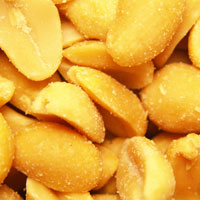
It is generally believed that food allergies are increasing but it has not yet been fully confirmed, although studies have shown an increased incidence of peanut allergy.
Current estimates suggest that 1-2% adults and 5-7% children suffer from food allergy. Many children outgrow their allergies by the time they become adults.
People who avoid wheat in their diet may be suffering from coeliac disease, rather than an allergy to wheat.
Although some people do have severe allergies to milk and eggs, many people who avoid dairy products do so because they are lactose-intolerant. This means they are deficient in an enzyme that digests lactose, the sugar found in milk. This is known as food intolerance rather than an allergy.
Many people choose to exclude certain foods from their diet because they feel this is beneficial to them, although they have not had a clinical diagnosis of allergy.
Untoward reactions to food were noted by the Greek Physician Hippocrates (460-370 BC) so they are not completely new.
Heating cream cheese

Yes and no. If by heating one means to cook with it, then there are many items available eaten hot, which contain cream cheese. Obviously like anything else, if it gets too hot, it will burn.
However if by heating one means gently warming, then cream cheese is a good food for bacteria, that is why it is normally chilled and has a short shelf-life. If one does not heat to an adequate temperature for long enough, then this could be dangerous.
Dodgy shellfish
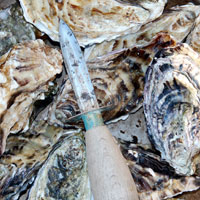
Assuming that your friend is not allergic to shellfish, then the reason he can no longer eat shellfish will be learned association. Food aversions can be caused by adverse physiological or psychological events. If your friend ate spoiled oyster and was subsequently ill, this adverse physiological event will have been associated with the sensory characteristics of the oyster. Such associations between effect and sensory attributes are hard to break.
If your friend was offered oysters again and refused to eat them, he is most likely to have reinforced his aversion. If he ate the oysters and was ill again, then of course the aversion would be reinforced. However if he ate them and was not ill, he may dissociate the sensory characteristics from the effect and diminish the aversion, but not necessarily. He may have stressed himself at the very thought of eating oysters again, which would still reinforce the aversion even without subsequent physiological effect. This sequence of events can also occur following a psychological event, a typical examples being parents arguing whilst a child is eating.
Cooking with tomatoes
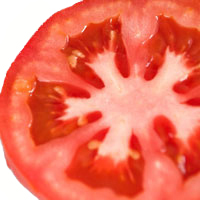
Contrary to folklore, cooking tomatoes does not reduce their acidity. In fact the acidity tends to increase purely due to concentration as water is boiled off. The easiest way to compensate is to add a little more sweetness to your recipe, directly through sugar or honey, or adding sweet vegetables such as carrots. Alternatively, you could aim for sweeter tomatoes (cherry tomatoes tend to be higher in sugars than beef tomatoes) or, riper tomatoes.
None of this will change the level of acid reaching the stomach, but it should be enough to convince your taste buds. There are other tastes in tomato other than sour and sweet. Tomatoes are also rich in amino acids that give a savoury, or 'umami' taste. If you like that savoury taste, you might be better to stick with the beef varieties, and never throw away the centre pulp of the tomato which is higher in this savoury taste than the outer flesh.
Another point to remember is to be careful what saucepans you use to cook tomatoes. Their acid can cause oxidation of aluminium for example, leading to unpleasant metallic tastes. Finally, whereas we tend to think of cooking as reducing the nutritional quality of fruits and vegetables, tomatoes are certainly an exception. Cooking tomatoes makes the lycopene from the tomatoes more bioavailable, and lycopene is a proven antioxidant.
The Ask a Food Scientist Forum has now closed
